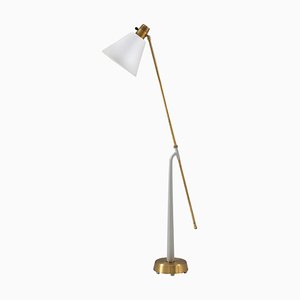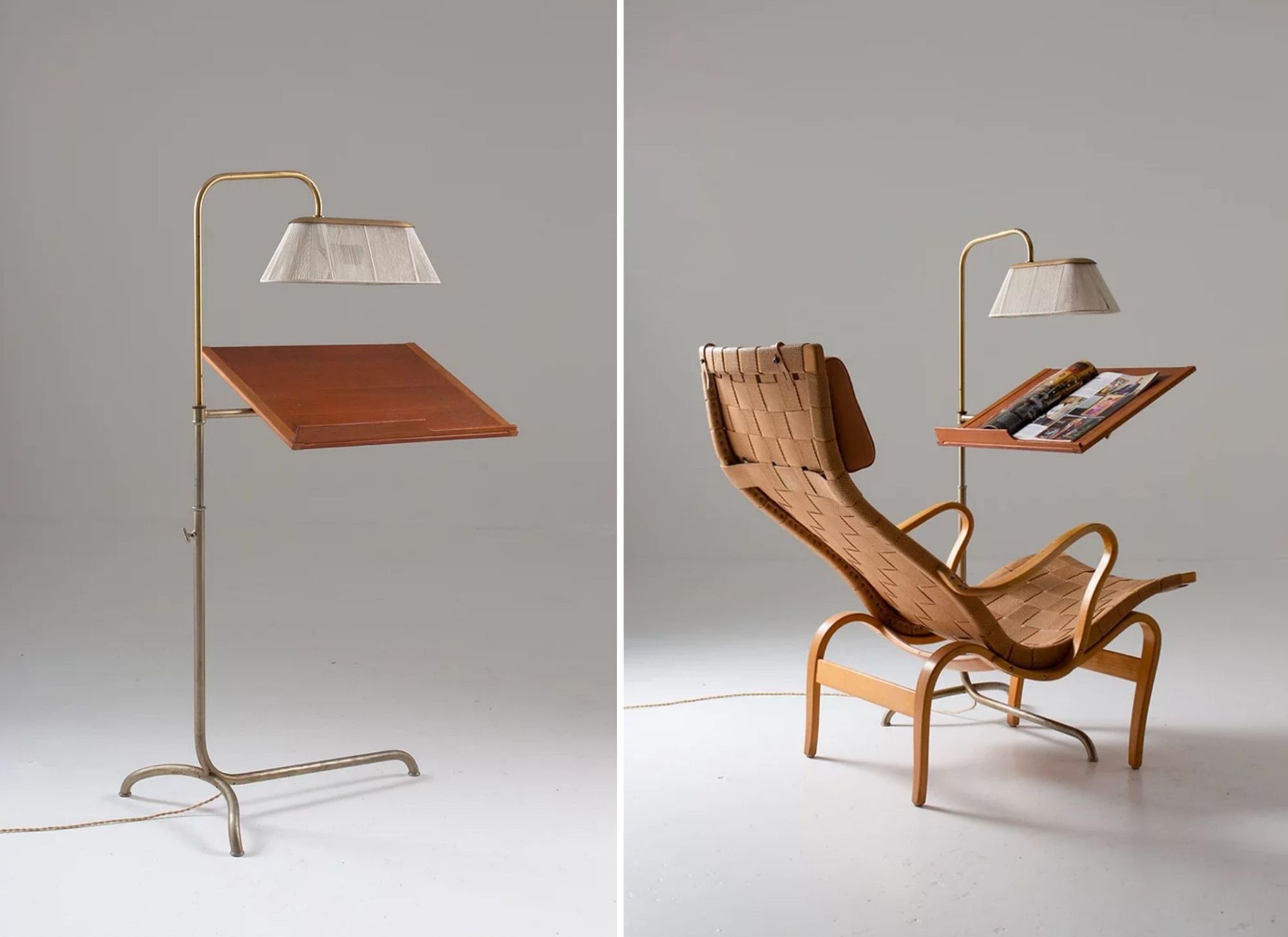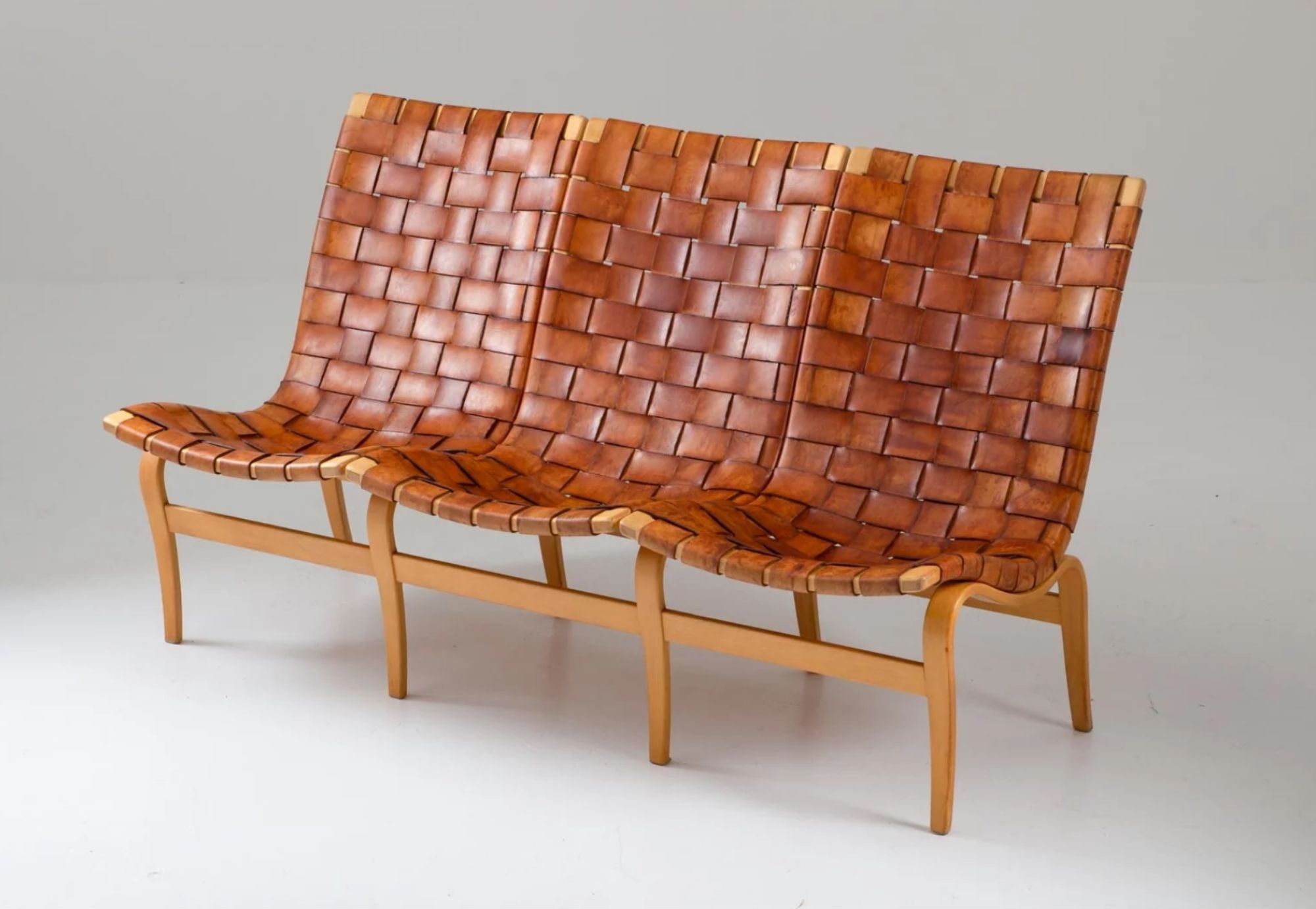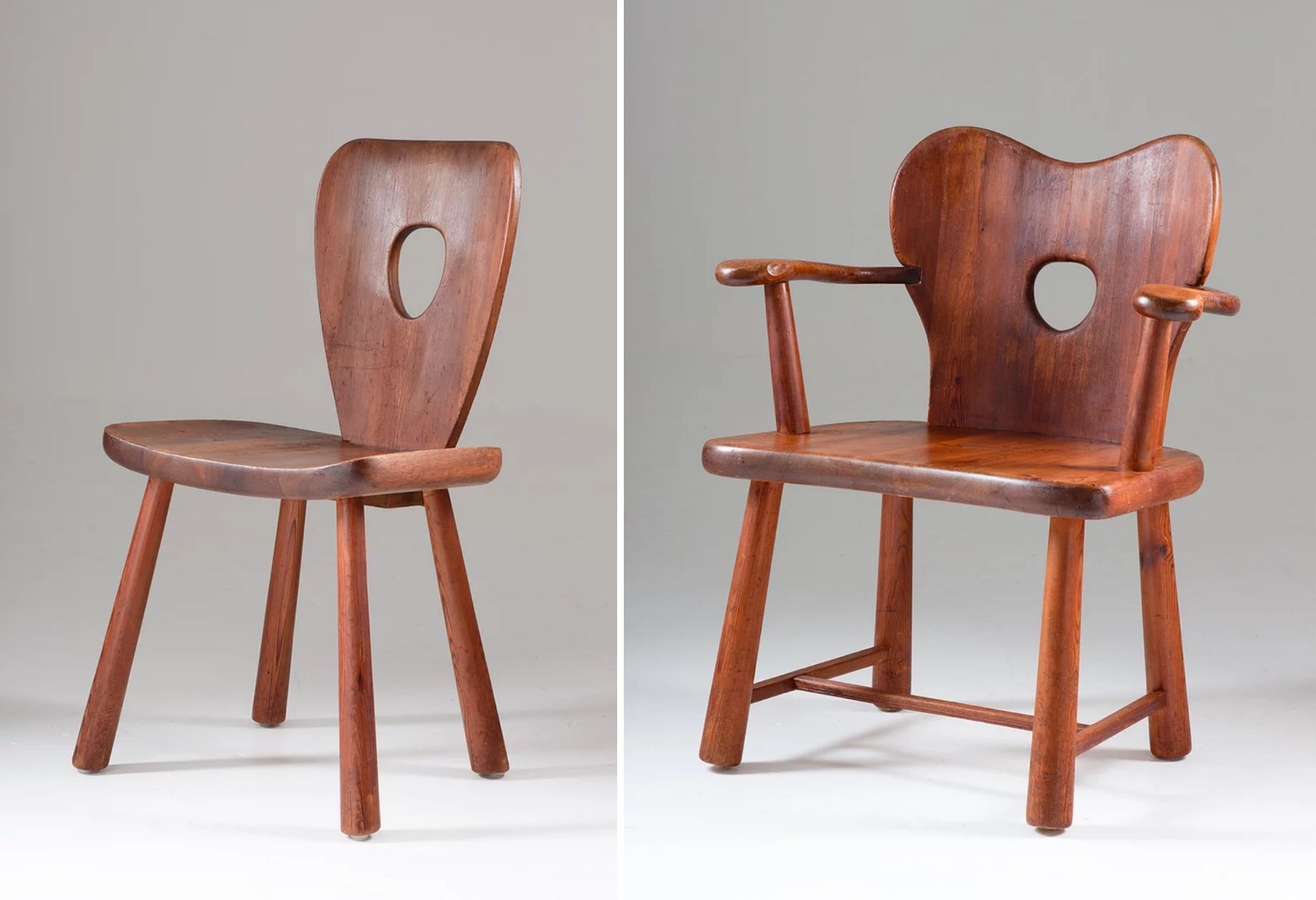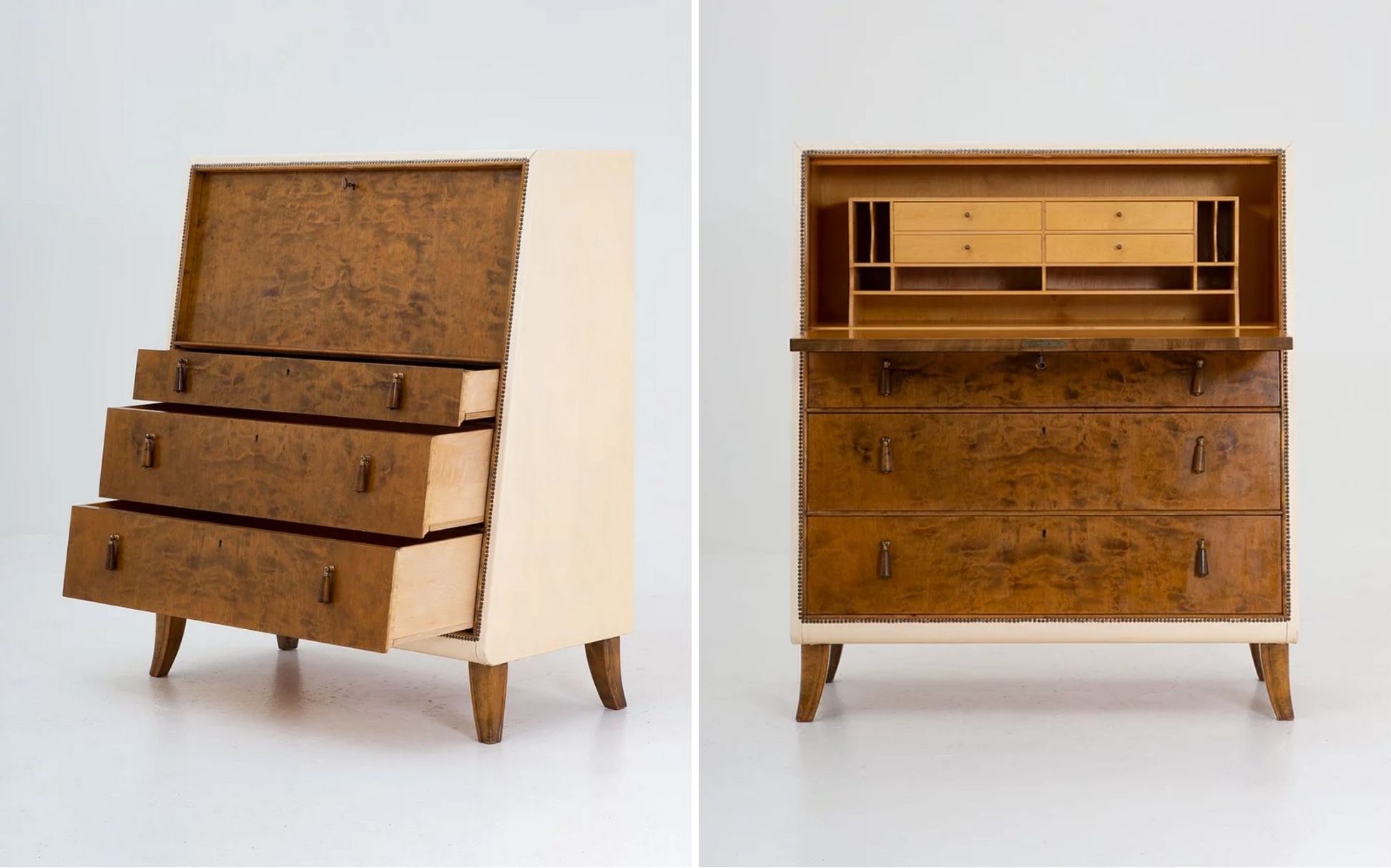Gustav Svartvik of 1st Modern recommends 9 collection-worthy 20th-century designs from Sweden
Swedish Rarities
“The items we tend to love the most are those that are rare, of unknown origin, one of a kind,” explains Gustav Svartvik when asked about his speciality. Svartvik and his partner Signe Tollefsen launched their vintage business, 1st Modern, in Karlstad, Sweden, in 2015. Ever since, 1st Modern has offered a well curated and well researched selection of vintage Scandinavian design across a range of price points. Within his broader collection, Svartvik has sourced some true rarities of 20th-century Swedish design.
To this day, despite the ever-growing demand for vintage furniture and decor, Swedish design remains an underappreciated segment of the market—a fact that never ceases to astonish us. This material just overflows with craftsmanship, attention to detail, and understated elegance. Svartvik has recommended nine rare, collection-worthy 20th-century designs from Sweden that will show you just what we mean.
Reading Stand with Light by Bruno Mathsson, circa 1940
“The reading stand by internationally renowned Swedish furniture designer and architect Bruno Mathsson is quite common, but what makes this item special is the integrated lamp,” Svartvik tells us. “We still don't know much about it, but it might have been custom made for a library. It was probably a special order, made in a very limited edition during the late 1930s or early 1940s.”
Three-Seat Eva Sofa by Bruno Mathsson for Firma Karl Mathsson, 1966
Mathsson’s Eva Lounge Chair is a familiar icon of modernist design, with examples widely available on the vintage market. But the Three-Seat Eva Sofa is much less known and much harder to find. This one from 1st Modern is all the nicer with, according to Svartvik, “a perfectly patinated naturally leather.”
Studio Craft Dining Chairs by Bo Fjaestad, 1930s
These dining chairs were handcrafted by Bo Fjaestad
, a Swedish artist, sculptor, and woodworker who played a key role in developing the Swedish studio craft movement. He was a cofounder of Arvika Konsthantverk, an artisan commune and speciality shop in Arvika. This set of chairs was in fact originally purchased from that shop and remained with the original owner until they were acquired by Svartvik, who notes that this "cabin furniture series by Fjaestad is reminiscent of work by his more well known contemporaries, Axel Einar Hjort and Carl Malmsten.”
Lillbo Cabinet by Carl Malmsten, 1960s
Swedish designer-architect Carl Malmsten was a champion of traditional Swedish craftsmanship and an opponent of the functionalist movement. Svartvik has drawn our attention to Malmsten’s rare Lillbo Cabinet, explaining: “As with all Malmsten furniture,the quality is fantastic in every detail, while the design is very minimalistic. Small details catch the eye, such as the handles and the hinges.”
Swedish Modern Bureau by Otto Schulz for Boet, 1940s
This very rare, 1940s-era bureau was created by German born architect-designer Otto Schulz
, who moved to Sweden and launched the prestigious interior design shop Boet in 1920. The piece is clad in alder root veneer coupled with cream-colored vinyl. The pearl nails that line the facade, according to Svartvik, “are a signature for this designer.”
Model 755 Lounge Chair by Svante Skogh for Ope Möbler, 1950s
Model 755 Lounge Chair by Svante Skogh
, explains Svartvik, “was designed at the beginning of the designer’s career, in 1954, and this chair is still one of his best designs. The curved shape is just as beautiful to look at as it makes it comfortable to sit down in.”
Model 743 Table Lamp by Hans Bergström for Ateljé Lyktan, 1950s
About this piece, Svartvik tells us: “Hans Bergström’s lamps are a favorite among many Swedish design dealers and collectors. He created numerous gorgeous models, and lots of them were made in very limited quantities. This example especially is more like a piece of art than a lamp.”
Model 15616 Table Lamp from Böhlmarks, 1940s
“Böhlmarks
is another favorite producer of Swedish lamps—one that deserves more fame on the international scene, Svartvik says. “We like this lamp as it is so different from other Swedish lamps during the time. It has obvious influences from continental lamps, but with a Swedish touch of minimalism.”
Large Brass Candleholders by Lars Bergsten for Gusum, 1970s
Gusum Mässing
is a classic Swedish brand for brass decor, and this style candelabra is fairly common. “But these are among the biggest solid brass candelabras in this series and are rarely seen,” Svartvik notes. Each is an impressive 56 cm high.
All photos © 1st Modern
More to Love
Vintage Floor Lamp by Bruno Mathsson

Swedish Modern Dining Table in Birch, Glass & Rattan from Bodafors, 1940s

Mid-Century Scandinavian Leather Model Eva Sofa by Bruno Mathsson for Firma Karl Mathsson, 1966

Scandinavian Dining Chairs in Pine by Bo Fjæstad, 1930s, Set of 6

Swedish Modern Bureau by Otto Schulz for Boet, 1940s
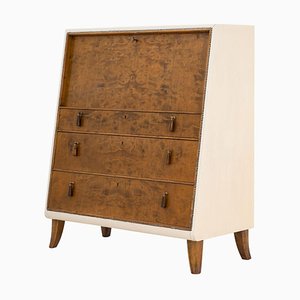
Mid-Century Scandinavian Lounge Chairs by Carl Malmsten, 1940s, Set of 2

Large Swedish Brass Candleholders by Lars Bergsten for Gusums Bruk, 1970s, Set of 2
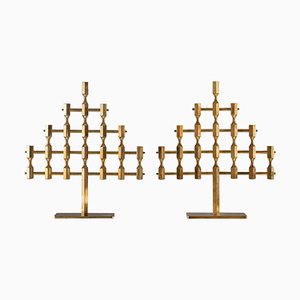
Swedish Pine Cabinet by Göran Malmvall for Svensk Fur
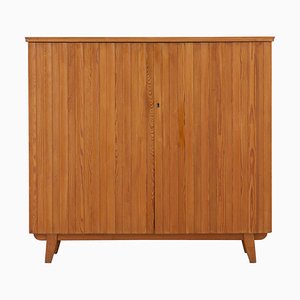
Mid-Century Floor Lamp by Hans Bergstrom for Studio Lamp, 1940s, Sweden
